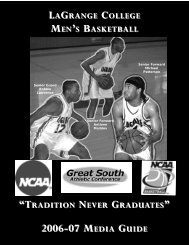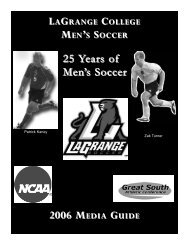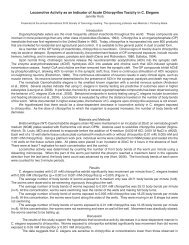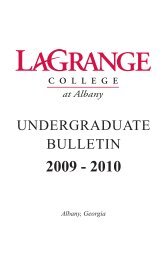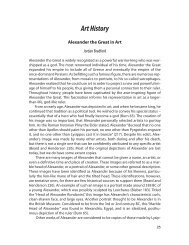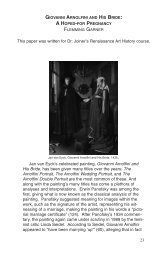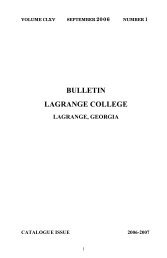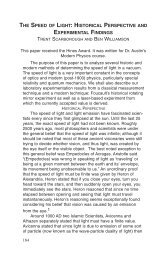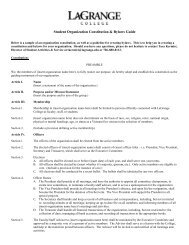Works of Mercy as a Vital Component to Sanctification - LaGrange ...
Works of Mercy as a Vital Component to Sanctification - LaGrange ...
Works of Mercy as a Vital Component to Sanctification - LaGrange ...
Create successful ePaper yourself
Turn your PDF publications into a flip-book with our unique Google optimized e-Paper software.
Ryan Snider<br />
pared <strong>to</strong> Calvin. Wesley’s emph<strong>as</strong>is on holy living underlies the<br />
theological difference in the way that the two theologians define<br />
justification and sanctification. Furthermore, sanctification will<br />
be unders<strong>to</strong>od <strong>as</strong> a process wherein works <strong>of</strong> mercy can make<br />
a difference once this comparison is made.<br />
Wesley’s teleological outlook on sanctification is very different<br />
from that <strong>of</strong> Martin Luther, who insists that the change <strong>of</strong> the<br />
status <strong>of</strong> the person is the goal <strong>of</strong> salvation. 12 Wesley also differs<br />
from Luther by restricting justification <strong>to</strong> be the forgiveness<br />
<strong>of</strong> sin. Luther, on the other hand, connects grace with righteousness<br />
at justification. This connection between grace and righteousness<br />
principally results from his idea that grace is the “favor<br />
<strong>of</strong> God—not a quality <strong>of</strong> the soul” and a “living, active and operative<br />
spirit.” 13 Furthermore, Luther redefined righteousness<br />
from the active and formal state <strong>to</strong> that “p<strong>as</strong>sive righteousness<br />
in which the merciful God justifies us by faith.” 14 Faith is a gift<br />
<strong>of</strong> God since righteousness is entirely in the mercy <strong>of</strong> God and<br />
not in human efforts. 15 In relation <strong>to</strong> a doctrine <strong>of</strong> sanctification,<br />
the Christian life is one <strong>of</strong> repentance, <strong>as</strong> “discovering and<br />
appropriating the grace and forgiveness <strong>of</strong> God is the supreme<br />
goal, and justification is the greatest gift.” 16 As Gerhard Ford, a<br />
contemporary Lutheran theologian says, sanctification is “the art<br />
<strong>of</strong> getting used <strong>to</strong> justification.” 17<br />
Wesley primarily came in<strong>to</strong> contact with Lutheran theology<br />
<strong>as</strong> a result <strong>of</strong> the Moravian influence during his mission <strong>to</strong><br />
Georgia in 1738. Wesley w<strong>as</strong> initially influenced heavily by the<br />
Moravians, and consequently continued <strong>to</strong> seek out the<br />
Moravians when he returned <strong>to</strong> England. A first b<strong>as</strong>ic influence<br />
the Moravians had on Wesley w<strong>as</strong> the adoption <strong>of</strong> cl<strong>as</strong>ses and<br />
societies through the influence <strong>of</strong> Peter Böhler, Count<br />
Zinzendorf, and the Herrnhut congregation. 18 The implementation<br />
<strong>of</strong> the cl<strong>as</strong>ses and societies become an important device for<br />
Wesley’s focus on transformation and his connection between<br />
piety and mercy. Even though Wesley separated sanctification<br />
from justification, the Moravians were most successful in orienting<br />
Wesley <strong>to</strong>ward the Lutheran centrality <strong>of</strong> justification by faith<br />
alone. Furthermore, the Moravians are famously noted for the<br />
influence they had on Wesley at a meeting at Aldersgate Street,<br />
when Wesley gained <strong>as</strong>surance <strong>of</strong> his own forgiveness and salvation.<br />
Moreover, Wesley learned from Lutheran theology and<br />
163





